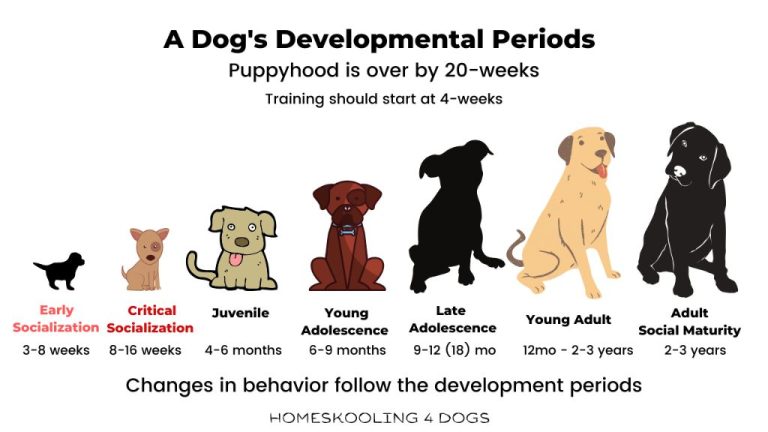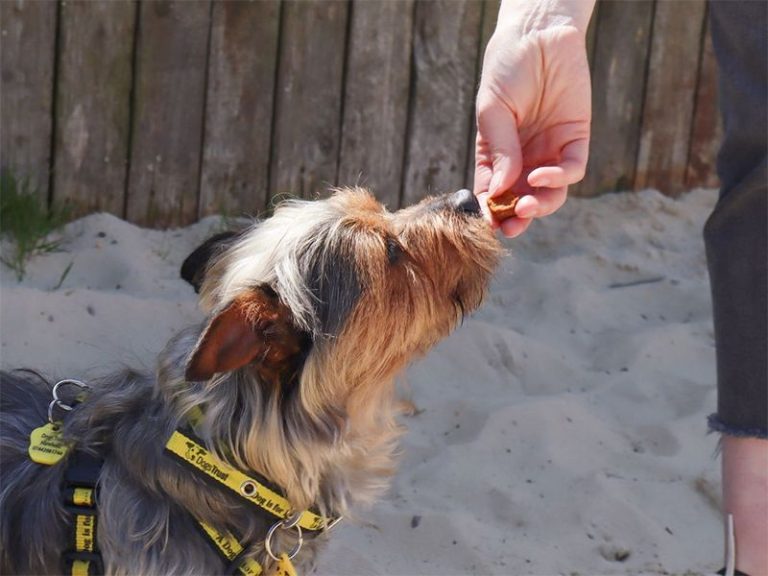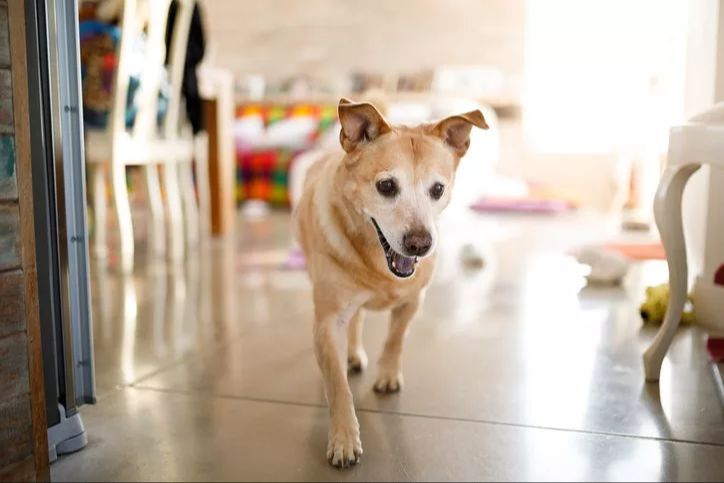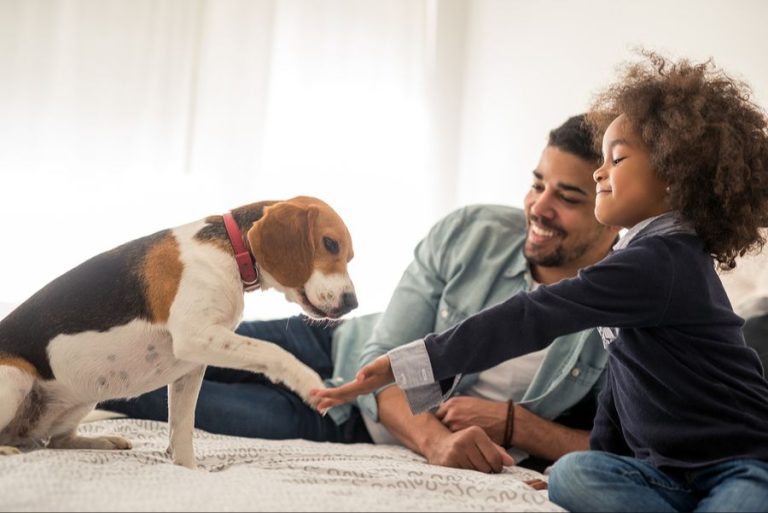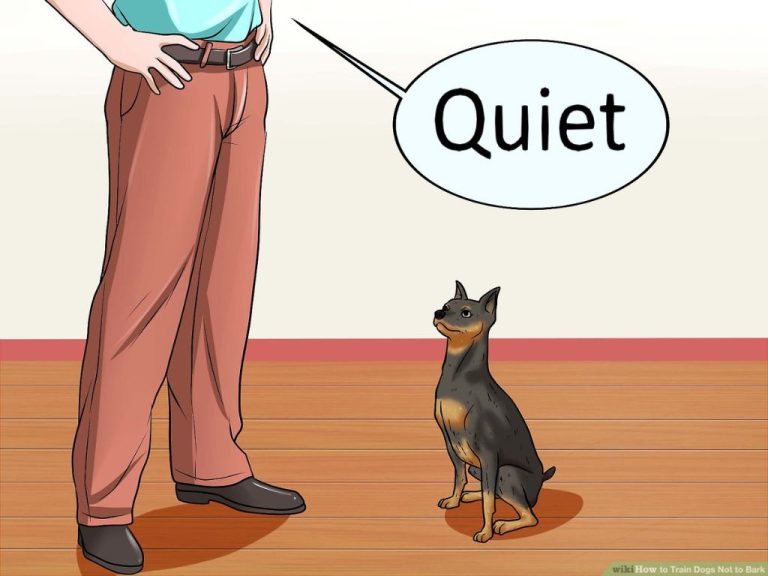Teaching Your Dog To Settle Down: Techniques For Calm Behavior At Home
Why Teaching Settle is Important
Teaching your dog to settle down on command is one of the most important skills you can train. A dog that can relax calmly on cue provides huge benefits for both you and your pup. As this article explains, it helps your dog learn to control their impulses and relaxes their mind. This prevents destructive anxious behaviors from developing and makes them better companions overall.
When your dog knows how to settle, it stops them from constantly seeking stimulation and attention. This allows them to remain calm in situations that might normally cause excitable behavior, like when guests visit. With this skill, your dog can relax happily beside you rather than jumping up on visitors. Overall, teaching settle builds your dog’s self-control and adaptability, making them pleasant to be around.
Set Up the Environment
Setting up the right environment is crucial for teaching your dog to settle down calmly. You’ll want to remove as many distractions as possible so your dog can focus on relaxing. Put away toys, bones, and other tempting items. Close doors to busy areas and minimize outside noises and household activity. This source has tips for creating a calming environment: How to set up a training environment for your dog.
Have some appropriate chews or toys on hand that your dog can settle down with, such as a stuffed Kong or long-lasting chew. You can also designate a mat, bed, or crate as your dog’s special “place” for relaxing. Place training teaches your dog to go to a spot and remain calm and settled there. This source explains how place training develops impulse control: Teaching a dog previously kept outside to be calm inside.
The right setup removes distractions so your dog can focus, provides appropriate settling activities, and designates a place for your dog to go relax on cue. This prevents demanding behaviors and helps your dog learn to settle calmly.
Capture Calmness
One effective technique for teaching settle behaviors is to capture calmness. This involves rewarding your dog when they are naturally calm and relaxed without being prompted. The key is to reinforce calm behavior so your dog learns that being calm earns them rewards.
To capture calmness:
- Wait for moments when your dog is lying down, relaxing, or resting on their own.
- Immediately reward with treats, praise, and affection when they are in a calm state.
- Use a calm, quiet voice and gentle pets so as not to rile them up.
- Gradually increase the duration of time they must remain calm before getting a reward.
With repeated rewards for chilling out, your dog will learn that being calm and settled is desirable behavior. It taps into their natural states of rest and acclimates them to relaxing at home. Be patient, as capturing calmness takes consistency over time before it becomes a conditioned behavior.
Work on Impulse Control
A key part of teaching your dog to settle is working on their impulse control. Dogs often get over-excited or hyperactive because they lack self-control. Teaching them to resist their impulses and remain calm is essential.
Start by working on basic obedience commands like sit/stay and down/stay. Have your dog sit or lie down, then take a step back and return to reward them for staying put. Gradually increase the distance and duration. This teaches them to remain in place until you release them.
The “wait” command also builds impulse control. With your dog sitting, hold a treat in your closed hand and say “wait.” Only open your hand and give the treat when they stop nudging and remain seated. Increase the wait time as they progress.
“Leave it” cues your dog not to touch something. Place a treat on the floor and cover it with your hand. Say “leave it” and lift your hand. Only reward them if they don’t go for the treat. Practice with toys and other temptations.
As noted in this Whole Dog Journal article, impulse control training teaches patience and self-discipline.
Practice Place Training
Giving your dog a dedicated location to settle, like a mat or crate, can help reinforce calm behavior. Start by teaching your dog to go to the mat or crate on command. Use a lure or hand signal to guide them there and reward with treats and praise when they step onto the mat/enter the crate. Once your dog consistently goes to the spot on cue, you can begin asking them to settle there.
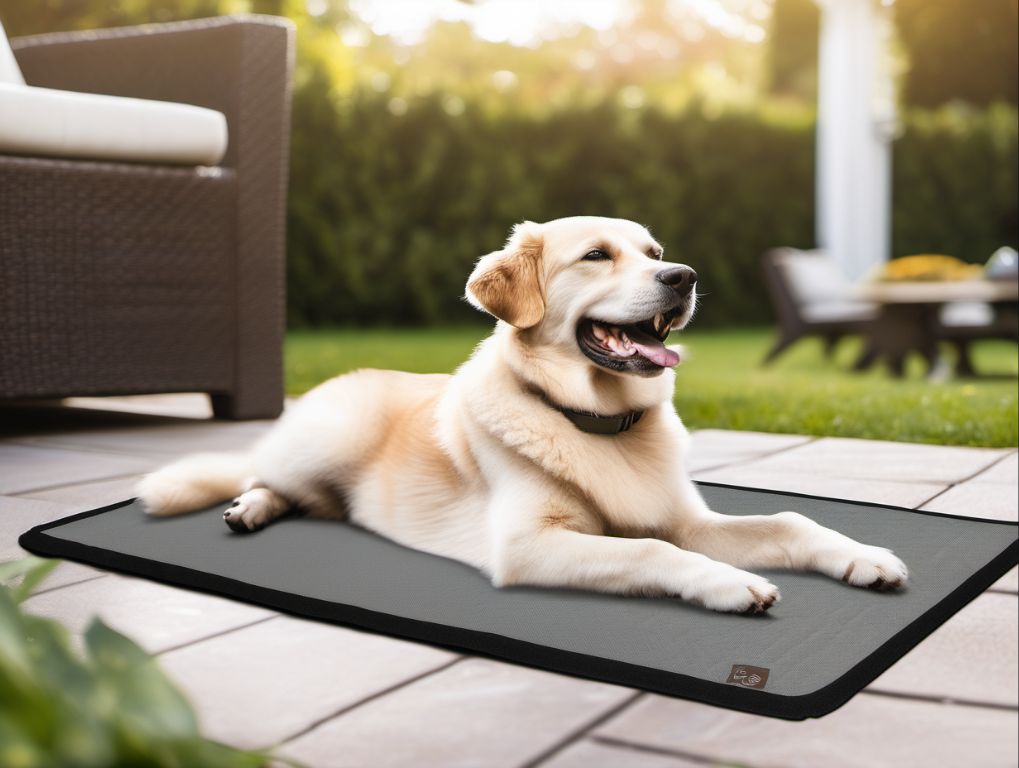
When your dog is on their mat/in their crate, reward calm behaviors like lying down, resting their head, or remaining relaxed. If they try to get up, give the stay command and reward when they remain in place. Slowly increase the duration your dog must remain settled before giving a reward. The goal is to reinforce that the mat/crate is where they should go to relax. Cite https://www.ddfl.org/resources/teaching-your-dog-to-settle/ for additional tips on duration training.
With consistency, your dog will learn to settle automatically on their designated mat/in their crate when asked. This gives them a positive place to redirect energy and reinforces calmness when you need them to relax at home.
Use Relaxation Cues
Using specific relaxation cues can help signal to your dog when it’s time to settle down and relax. As explained in the Protocol for Relaxation guide [1], you’ll want to pair a cue word like “settle” or “chill” with getting your dog to lie down in a calm setting. Say the cue word in a calm, quiet voice right before giving your dog a chew toy or long-lasting treat. The chew will help occupy them while they remain in a settled position.
Be consistent with using the relaxation cue before treats or chews so your dog starts to associate the word with settling down. With enough repetition, you’ll be able to use the cue when your dog seems restless or overexcited, and they should respond by lying down in a relaxed state. Make sure to reward them with praise and occasional treats when they follow the relaxation cue as desired. This can help reinforce calm behavior when you need it most around the house.
Increase Duration Slowly
One of the keys to successfully teaching settle is to gradually increase the duration you expect your dog to remain settled. Pushing the duration too quickly can overwhelm your dog and set back your training.
Start with very short settle times, just a few seconds at first. Give your dog lots of praise and rewards for remaining calm. Once your dog is consistently settling for a short duration, start to add just a few additional seconds. Increase the time in small increments, allowing your dog time to be successful at each duration before moving to a slightly longer settle.
For puppies, aim for settle times of just 30-60 seconds at first. Adult dogs may be capable of settling for 2-5 minutes initially. Build up the duration gradually over multiple training sessions until your dog can settle for 15-30 minutes.
If your dog has trouble settling for the new duration, simply step back to the previous duration they were successful at and build up more slowly. Patience and small increments are the keys. Eventually your dog will learn to settle for extended periods of time.
Troubleshoot Setbacks
It’s common for dogs to regress in their training from time to time, so don’t be discouraged if your dog has trouble settling after previously doing well. Setbacks are a normal part of training. Focus on managing the environment and cues better to get your dog back on track.
If your dog starts acting up again, go back to capturing calmness in a low distraction environment. You may need to limit access to areas in your home that get your dog riled up. Remove any triggers that could be over-exciting your dog. Reinforce impulse control exercises and relaxation cues again in easier settings first before working up to high distraction areas.
Also examine whether you may have progressed too quickly with duration or location challenges. Dial things back to where your dog was successful before. Build on existing foundations rather than rushing forward. Better to take things slow and steady. Be patient and stick to a routine, trying to end sessions on a positive note.
Consistent, positive associations will help your dog settle easier over time. Expect some ups and downs during this training process. With careful troubleshooting and environmental management, you can get your dog’s settling skills back on track.
Try Calming Supplements
There are several calming supplements that you can talk to your vet about trying to help reduce your dog’s anxiety and settle behaviors, including:
CBD or hemp oil – CBD oil has gained popularity for helping relieve anxiety in dogs. Consult your vet first, as CBD can interact with other medications. Look for organic, high quality CBD oils formulated specifically for pets.[1]
Calming chews – Many brands make calming treats or chews containing ingredients like melatonin, tryptophan, chamomile, and L-theanine to promote relaxation. Follow dosing instructions carefully.[2]
Pheromone products – Synthetic pheromones mimic natural “appeasing” pheromones and can help reduce stress. Try pheromone sprays, diffusers, or collars. Speak to your vet first if using multiple products.
While supplements can help take the edge off, be patient as it may take trial and error to find the right product or combination. Always consult your vet before starting any new supplements.
[1] https://naturaldog.com/products/calming-supplement
[2] https://www.petco.com/shop/en/petcostore/category/dog/dog-health-and-wellness/dog-calming-aids/dog-calming-supplements
Be Patient and Consistent
Teaching your dog to settle down and relax takes time and commitment. Some dogs may pick up settling skills quickly, while others require more repetition. It’s important not to get frustrated or give up. With patience and consistency, you can make progress over time.
Celebrate the small wins along the way. If your dog is able to settle for just a few seconds at first, praise and reward that behavior. Gradually increase the duration as your dog is ready. Avoid pushing too far too fast, as that can be counterproductive. Set your dog up for success by working in short sessions and providing encouragement.
Be prepared that you may see some setbacks or regression in training. Stick with it and remain patient. Consistency is key – be sure everyone in the household is on the same page with training cues, rewards, and expectations. With a steady, positive approach, your dog can master settling skills.
According to the Timing, Patience, Consistency=3 keys to Successful Training and the Importance of Patience, Consistency, and Repetition in Police Dog Training, being patient and consistent are crucial for any dog training goal.

